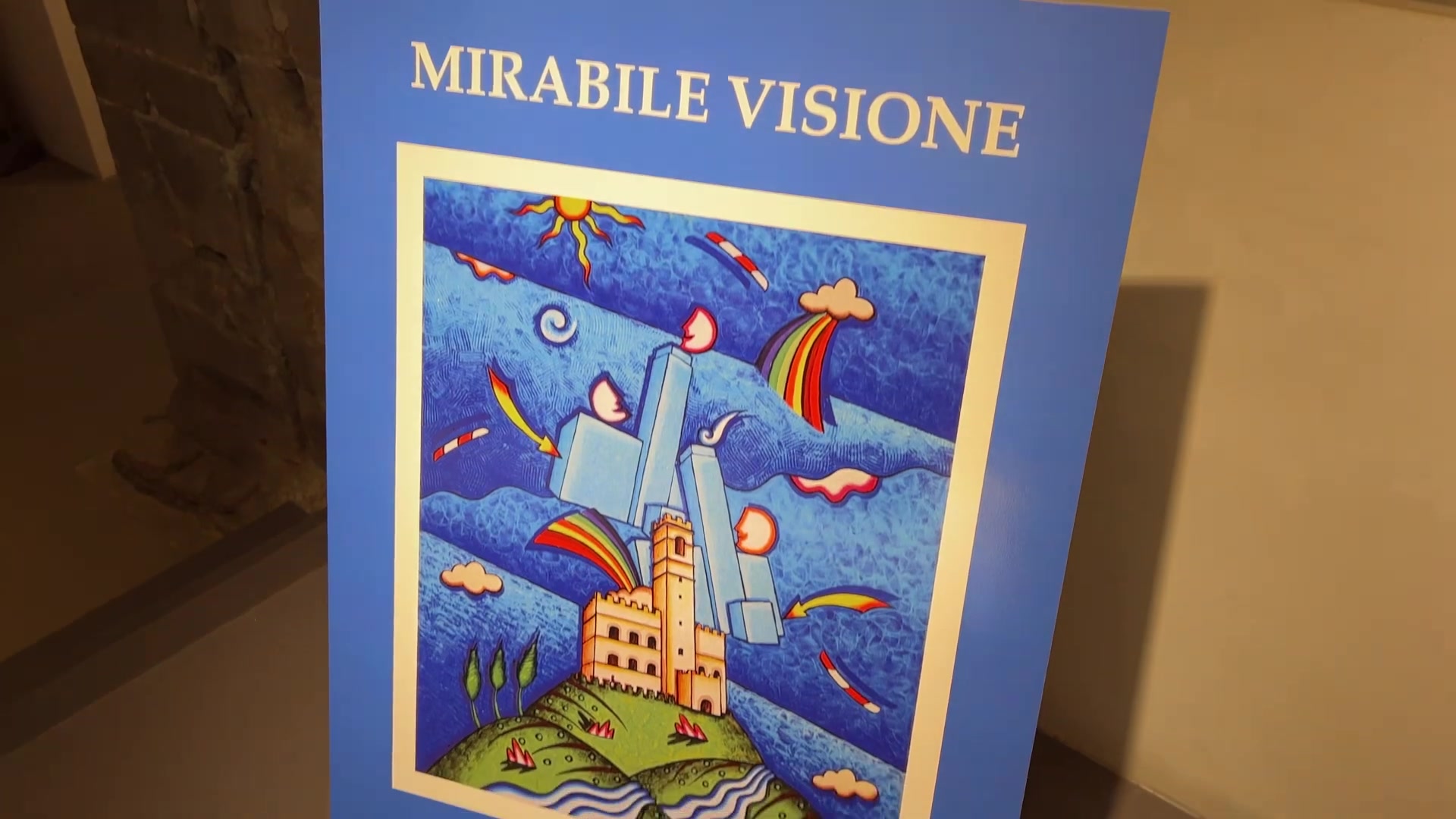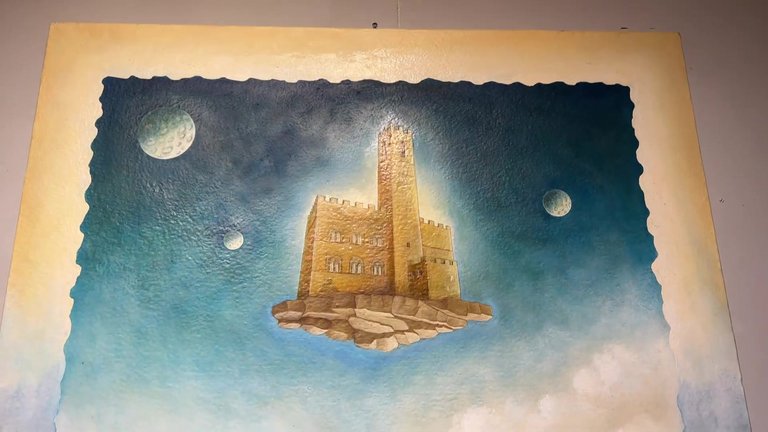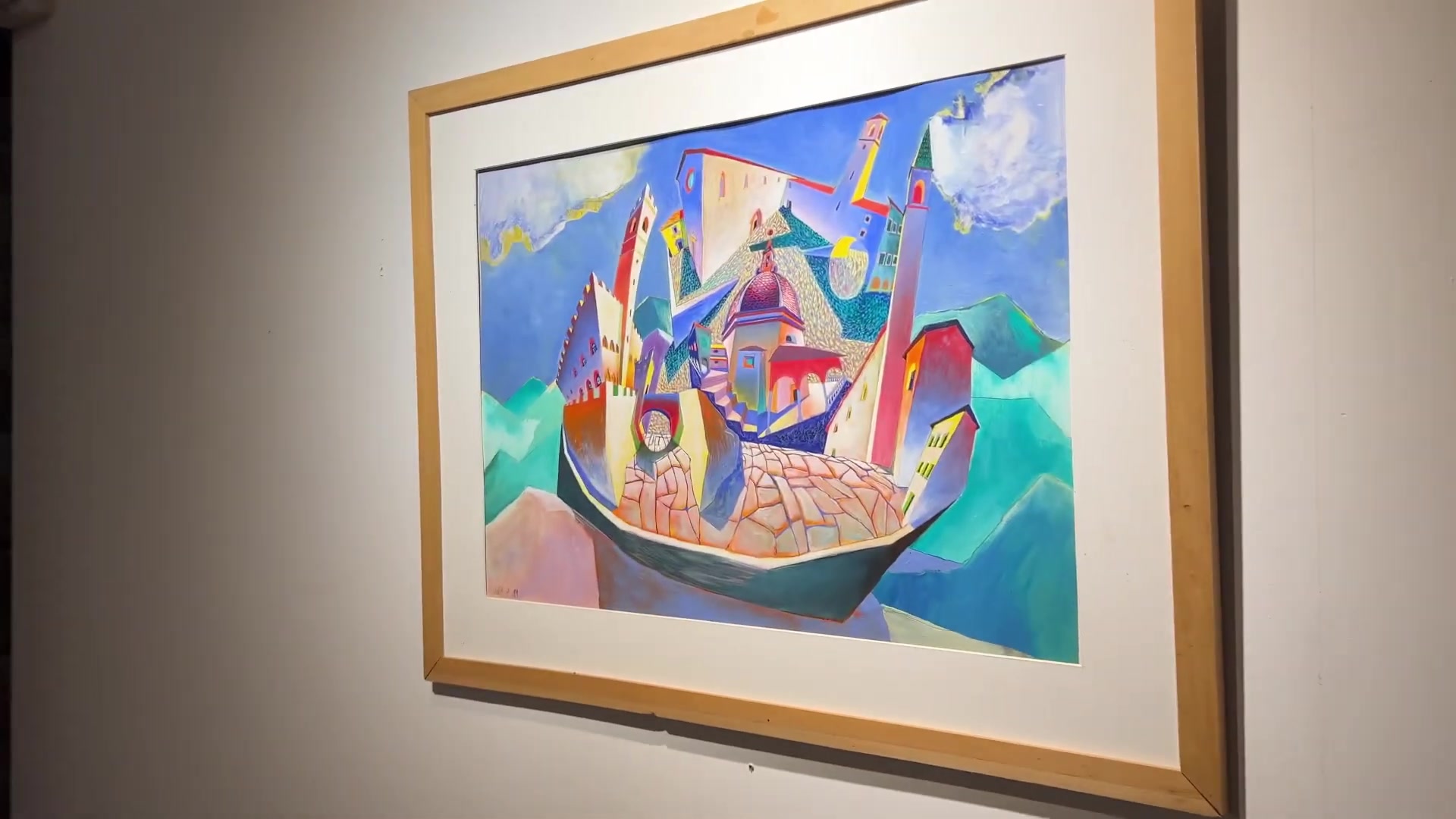
Hello my friends. I want to share another wonderful walk I took in Tuscany. We visited the town of Poppi and explored the magnificent Poppi castle. On our first attempt, the castle was unfortunately closed. But this time it was open, much to our delight and we had the chance to tour it. My nephews joined us on this trip.


The construction of this castle dates back to the late 12th century. The structure we see today, with minor modifications, was completed in the 14th century, around the 1300s.

The castle belonged to a wealthy and respected family. It is also renowned for its connection to the famous poet Dante Alighieri, who is said to have lived here for a while. After his exile from Florence, Dante reportedly stayed in this castle and wrote parts of his great work, The Divine Comedy. A statue of Dante stands right beside the castle in his honor.


As we entered the inner courtyard, we saw it was richly adorned with coats of arms of various noble families. The children immediately started running around, exploring. The castle resembles Florentine architecture and it’s said that the famous Arnoldo di Cambio played a role in its design or served as an inspiration for its construction. There is also a narrow door leading to an old prison.














In one room we encountered a typical exhibit often found in castles: an old table known as the Table of Justice. It is said that during the time when the castle served as a central administrative hub, judgments were delivered here. One intriguing question arose: how were windows covered in the Middle Ages? The windows here have no modern frames or fittings. At the time windows were typically covered with wooden shutters, leather or fabric curtains. Occasionally glass was used, but that was reserved for the wealthy.












Back then there was no wallpaper, so walls were decorated with hand-painted patterns. The ceilings also featured intricate designs. In the Middle Ages few people could afford to fully paint such enormous rooms because paints were made using natural pigments, often mixed with substances like egg yolk. This process was labor-intensive and expensive. Even today, natural pigments are hard to obtain, though technological advancements have made things easier.



There is also a Madonna painting here, believed to be the work of a Florentine workshop. We went up to the Count's quarters on the castle’s top floor. One room, known as the Coal Room or Charcoal Hall, features a large medieval fireplace. From the window there is a breathtaking view of the Combaldi Plain, which is tied to a significant chapter in Florence and Tuscany's history.




A battle took place here between the Guelphs and the Ghibellines. The Ghibellines were supported by troops from the city of Rieti, which was an independent city-state at the time. The Guelphs fought with the unified forces of Florence, bolstered by support from other Tuscan cities such as Cesena and Lucca. The battle ended in a Guelph victory, marking the beginning of an important era in Tuscan history. This triumph solidified Florence's dominance over Tuscany while weakening the Ghibellines.





An informational panel at the site provides details about various military structures dating back to the late 13th century. It mentions that this region once consisted of six territories, but this number eventually dwindled to four. There is also an exhibit on wars and military structures, reflecting the critical issues of that era. And the Florin, a gold coin minted in Florence, became one of the most significant currencies in Europe. Made from high-quality gold and subjected to strict quality control, the Florin was widely trusted and accepted.

In another hall, a model of a historic battle in Florence is on display. Sadly it reminds us that human nature hasn’t changed much over time, as people still tend toward conflict even today. There is also a portrait of Dante, created near the end of his life. And the castle’s tower, which suffered damage to its upper section during a storm in the 19th century and was later restored, is a remarkable sight. Visitors can climb the tower, standing 50 meters high, to enjoy a panoramic view of the surrounding area. When ascending, they are forewarned about the bells that ring every 30 minutes. In medieval times the tower served purely as an observation point, but bells were added in the 19th century.




After the castle visit we had lunch and then headed to the zoo. Naturally my nephews grew restless after the first 10 minutes in the castle and were much more eager to visit the zoo. I highly recommend visiting this area, even though it’s a bit far from Florence.it’s absolutely worth it, just like the other places I’ve mentioned in my blog.





The zoo visit was delightful, as always. It’s a beautiful, green park with spacious walking paths. It’s not crowded, likely because it’s far from Florence. The number of animals isn’t overwhelming, which is a positive aspect since animals are better off living in the wild. Most of the animals here were either born in the zoo or are being cared for because they wouldn’t survive in the wild.



It was a lovely outing and a relaxing day. We visited the area near the town of Rieti, which is close to southern Tuscany but quite mountainous. I’ll definitely come back and share more interesting posts about this area in the future...


